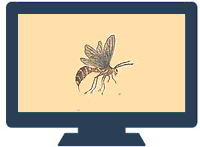Entomology, Department of
Date of this Version
2022
Document Type
Thesis
Citation
Masters of Science in Entomology Project, Department of Entomology, University of Nebraska-LincoLn
Abstract
Purpose of this Toolkit This toolkit is a resource for landscapers, landscape archi tect s and designers, urban foresters, growers. staff in public gardens, parks, nurseries and other ornamentaL horticulture professionals. It is intended for those interested in conserving non pest insects in urban and suburban environments.
Why urban and suburban areas? Insects are critical not only to natural and agricultural ecosystems. but also to urban ecosystems. Urban environments are characterized by a patchwork of habitat "islands" including home gardens, university campuses, urban parks and farms, vacant lots, cemeteries, arboreta, and botanicaL gardens [1). These habitat islands are the focus of this tooLkit.
Suburbs often have a wider range of plant species (2] than urban centers or rural outskirts, which presents an opportunity for landscape professionals to encourage insect and bird diversity. Some wildlife including birds (3], bumblebees, butterflies, and gall moths [4] have been found in higher numbers in the suburbs than in rural areas.
Arming industry professionals with the know-how to support insects benefits both biodiversity and people. Landscapes can be designed to preserve both valuable habitat and aesthetic value (5].


Comments
Copyright © 2022 Sierra Laverty